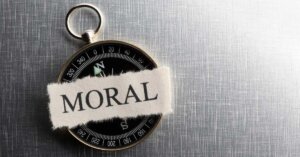According to WIPO’s Glossary of Terms Laws of Copyright and Neighboring Rights in 1980, plagiarism is defined as:
“Generally understood as the act offering or presenting as one’s own the work of another, wholly or partly, in a more or less altered form or context. The person so doing is called a plagiarist; he is guilty of deception and, in the case of works protected by copyright, also of infringement of copyright.”
So, if we refer to the notion of plagiarism, it means that a song composed by someone has been taken in part or whole and is recognized as belonging to someone else.
Talking about plagiarism in songs or music, recently, there have been several well-known singers such as Ed Sheeran, IU, and a South Korean girl band group called Fifty Fifty who are currently facing a copyright lawsuit over alleged plagiarism they committed against several other songs that were considered to have something in an authoritative tone.
Problems regarding the similarity of tones in songs/music often lead to copyright disputes over accusations of plagiarism because the number of song notes is limited, and some parts of the melody are used as inspirational references to the tune.
Some of the plagiarism accusations were filed against the following singers:
- The song Here’s Us, was popularized by the German band Nekta with IU’s The Red Shoes. In addition, IU was also accused of plagiarizing six other songs, namely Good Day, The Red Shoes, Pitiful, Boo, BBIBBI and Celebrity.
- The song Thinking Out Loud by Ed Sheeran was accused of plagiarizing the song Let’s Get It On by US music legend Marvin Gaye.
- The song titled Cupid from the band Fifty Fifty is thought to have something in common with a song from Turkey entitled Sen A?k?m?zdan.
The accusations against the songs must be accompanied by detailed evidence to show the degree of similarity.
If you look into the principles of copyright law in general, no article explicitly regulates the criteria for plagiarism of a piece of music or a song. So the proof in court must include a music expert to dissect the degree of similarity between the songs.
However, regarding the limitations and exclusions of a work of art, the music itself is still experiencing controversy. Many music experts use a benchmark bar to determine if a piece of music or a song has performed plagiarism.
Bar is a musical phrase in a song, where the bar on the song generally has four beats. Meanwhile, parts such as the verse and chorus are measured using 8 bars, generally around 8 to 16 bars. Some say if there are up to 8 bars in common in the song, it can be considered plagiarism. However, some music experts or other music observers say that just 2 bars can be said to have plagiarized a song, but this is not the standard criterion.
Therefore, to avoid plagiarism, songwriters must pay attention and do in-depth research to find songs that resemble their work, especially famous songs.
Issues of plagiarism in music/songs have been around for a long time, so Am Badar & Am Badar quickly responded to this issue and created an IP service in the form of copyright law protection. We can help you to take care of all the legal matters you need and protect your IP assets from potential disputes that will arise in the future. We can be your legal representative for litigation in court. If you need quality IP services, contact us via ambadar@ambadar.co.id
References:
Jurnal Kertha Negara






